When my family goes backpacking, we usually bring two small lightweight tents. But recently we’ve been doing more car camping. So, I decided it was finally time to get a larger tent. I wanted it to fit at least 3 of us comfortably, but still be light enough for backpacking, have lots of gear storage and be freestanding. Head room was a big concern for my husband.
I ended up choosing the Naturehike P-Series 4 person tent . I’ve since spent approximately 20 nights in the tent (including several in rain and two nights in sub-freezing weather). Here’s what I think of it.
Also read: Best Family Backpacking Tents
Specs (P2, P3, P4):
- Weight: 4.6lbs (2.1kg), 5lbs (2.3kg), 6.2lbs (2.8kg)
- Max headroom: 39” (100cm), 43” (110cm), 51” (130cm)
- Sleeping area footprint: 51×79”(130x200cm), 63×81” (160x205cm), 83×83” (210x210cm)
- Available at: Amazon
Quick Look
The P-Series is a freestanding 2-layer tent meant for 3-season use. It’s made by Naturehike, a brand known for cheap ultralight tents. It is available in 2P, 3P and 4P sizes.
- Main features: Two doors, two vestibules
- Pros: Affordable, lightweight for size, roomy, durable, easy setup
- Cons: Door doesn’t unzip along the bottom, annoying to repack
- Best For: Family backpacking or car camping with 2-3 adults.
P-Series Tent Layout
The thing I like best about the Naturehike P-Series is the layout. It has a massive front door and vestibule which can be converted into an awning with two trekking poles. The back door is smaller so a bit tricky for adults to get in/out of. However, it’s great for accessing gear stored in its vestibule while you are inside the tent.
2P and 3P Layout
The sleeping area footprint of the 2P version is 130x200cm and with the 3P version it’s 160x205cm. Because the sleeping area is rectangular, you have to sleep with your head to the sides. With just two people in the tent, that might not be an issue because each person has their own door. But, with three people, the middle person would have to crawl over the people on the sides to get out. I personally also hate sleeping along the door – I’d rather crawl straight into the tent to lie down.
Keep in mind that the back door is fairly small and best used for gear storage. When pitch space was limited, I had to pitch it so the back door was against shrubbery – making it inaccessible from the outside. So, even if you only have two people in the tent, the person in the back may still have to crawl over the person in the front to get out.
4P Layout
Unlike the 2P and 3P versions, the sleeping area footprint of Naturehike P4 is square (210x210cm). This means you can sleep with your head towards the door or the sides. It’s much more versatile and can come in handy when pitching on tight spaces.

You can sleep different directions in the 4P version!
Door Design Flaw!
The only thing I really hate about the Naturehike P-Series is that the door zipper doesn’t go along the bottom. I found this incredibly annoying.
With a full zipper, you can unzip a bit along the bottom and side. You end up with a C-shape opening which you can get in/out of easily. Because the P-Series zipper only runs along the upper part of the door, you actually have to unzip it almost fully to get in out. This takes longer so allows bugs inside.
I hated this so much after the first trip that I planned on taking the tent to a cobbler to put in a new zipper. This is not cheap to do! I didn’t get around to doing it by our next trip. And, after the 10th night in the tent, I got used to the annoying zipper.
Roominess
Because I usually sleep in an ultralight 2P tent, the P-Series seemed like a palace. The dome shape gives the tent good headroom. I could sit up easily and my 4 year old could stand up in the middle of the tent (made getting dressed inside much easier!). The front vestibule is large enough for a dog and some gear.
Some similar tents have an extra pole which runs on top of the dome to provide extra headspace. I personally am fine sacrificing headspace in exchange for one less pole.
Storage
Another main feature of the Naturehike P-Series is that it has tons of storage. The front vestibule is really massive. Just the sides easily hold four pairs of boots and cookware without blocking the entrance.
The back vestibule is smaller but fit my 55L pack. It was a tight fit though. The pack ended up sticking out a bit one night in the rain and got a bit wet. There are also two pockets and a lantern hook in the tent.
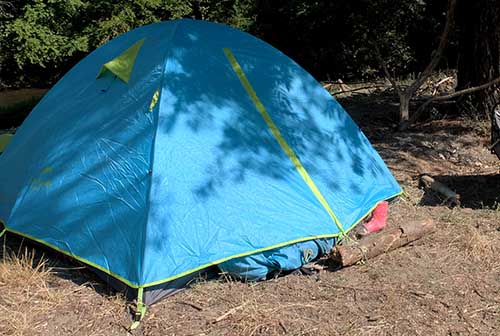
This is the back vestibule of the P4. Notice that my 55L pack sticks out a bit.
Naturehike P-Series Weight vs. Size
The Naturehike P-Series 4P tent is listed as weighing 6.2lbs/2.8kg. This weight includes everything: guylines, stakes, bag…. You don’t actually need all of the stakes or guylines which come with the tent though, so you could shave off at least 50 grams. The stakes are heavy, so you could save weight by swapping them for UL stakes.
Divided between 3 adults, that breaks down to just 2lbs/930gper person. Even between two parents, the weight is still manageable. While isn’t exactly ultralight, it is very lightweight. Bear in mind that there aren’t that many lightweight 4P tents available – and none at this price.
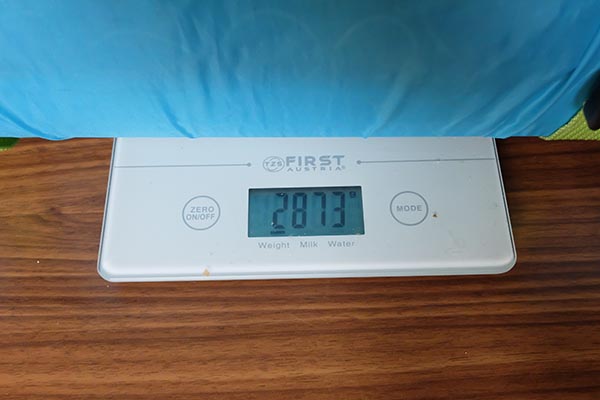
I weighed it and my P-Series 4P came in at 2,873 grams. The tent had already been used a few times though, so that extra weight might be dirt I picked up along the way 😀
The P2 and P3 versions also are lightweight. However, there are a lot more options when it comes for light 2P and 3P tents. If weight is your main concern, then another tent is probably better. But, if you have lots of gear and need the two vestibules, then the P-Series is a good weight.
Setup
As a dome tent, the Naturehike P-Series is really easy to set up. It uses clips, so you don’t have to worry about getting poles through annoying sleeves. Just lay out the inner tent, cross the two poles and clip them in place. Toss the rain fly over and clip it into place. Then just stake everything down.
Then My husband times me: I was able to get the tent up by myself in under 6 minutes. It took another 8 minutes to stake it down. You’ll need a minimum of 8 stakes (four at the corners, two for each door vestibule). I also recommend staking out the two bottom vents on each side (which means 10 stakes). In really bad weather, there are four more places you can stake out the tent – but I’ve never had to use them.
Packability
Considering its size, the Naturehike P4 isn’t too bulky. It was the same size as two self-inflating sleeping pads. It’s incredibly annoying to repack in the carrying case (and I’m generally good that that!). It would be easier if the carrying bag had a zipper instead of a drawstring opening. The good news is that it’s easy to divide the tent between two packs – so you don’t necessarily have to get everything back into the carry bag.
Stability and Durability
My P-Series has survived over 20 nights of family camping – and my kids definitely don’t treat tents gently. I like that the floor is a proper bathtub and made from a thick material. You don’t have to use a groundsheet with the P-Series tent.
Weatherproofness
For such an affordable brand, Naturehike tents do surprisingly well in rain. The P-Series has a deep and thick bathtub floor, so there weren’t any issues with flooding. I like that the side vents extend out quite far, creating a gap between the mesh and fly. My daughter always ends up leaning on the tent wall while she sleeps, which causes condensation. The gap between helped prevent this.
I only had a few nights of rain in the tent and no serious wind. But it seems sturdy enough that I’m not worried about using it in bad weather. The extra space is wonderful when you’ve got tons of wet gear that you don’t want to bring in the tent!
Update: I actually choose this tent for a backpacking trip in sub-freezing weather. It is heavier than I’d normally bring backpacking, but the large size meant that my partner and I didn’t have to worry about getting wet from the inevitable tent condensation that forms in cold weather.
Colors
The P-Series comes in a lot of colors. I spent an absurb amount of time deciding which color I wanted. Ultimately, I went with blue because it would be calming to wake up to. I also like that the blue is visible. If you need to do stealth camping, then get the grey or green version.
Get the Naturehike P-Series Tent Here on Amazon
P-Series vs. Top Alternatives
| Tent | Size | Footprint | Weight | Buy At |
|---|---|---|---|---|
| Naturehike P-Series | 4P | 83x83" | 6lbs 3oz | Naturehike.com,Amazon |
| REI Trail Hut | 4P | 88x90" | 8lbs 2oz | REI |
| Big Agnes Copper Spur HV UL | 4P | 86x96" | 5lbs 11oz | Campsaver |
| Marmot Tungsten UL | 4P | 92.9x81.9" | 7lbs 15oz | REI, Campsaver |
| Alps Mountaineering Lynx | 4P | 90x104" | 8lbs 7oz | Amazon |
| Eureka Space Camp | 4P | 90x96" | 13lbs 15oz | Amazon, REI, Campsaver |


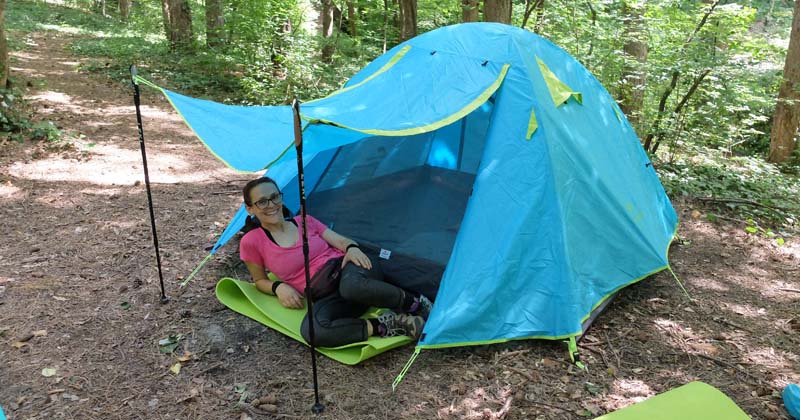
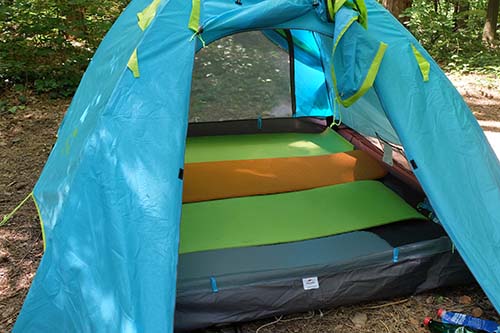
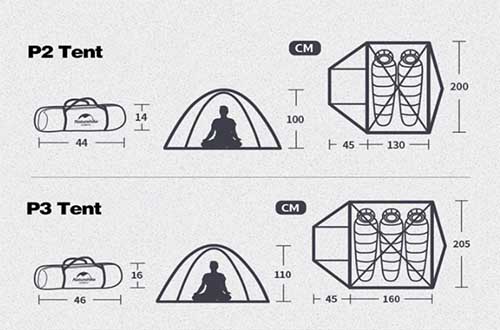
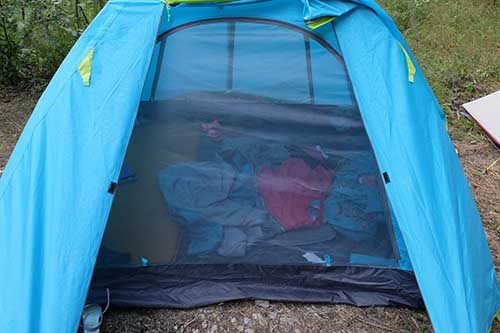
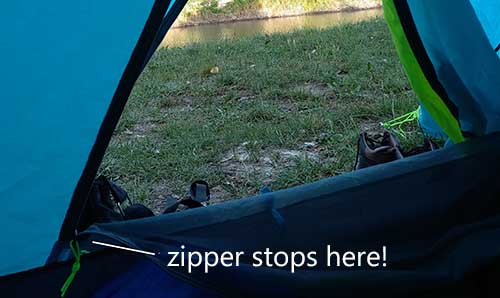
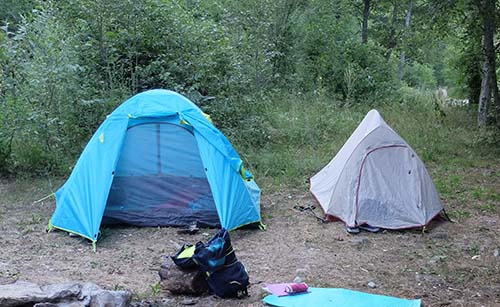
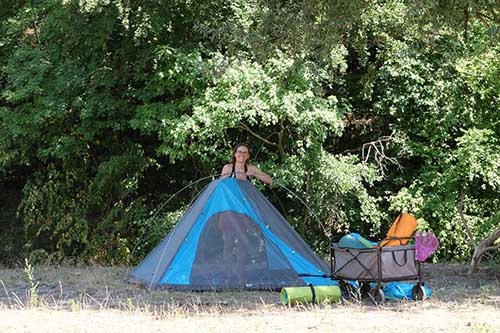
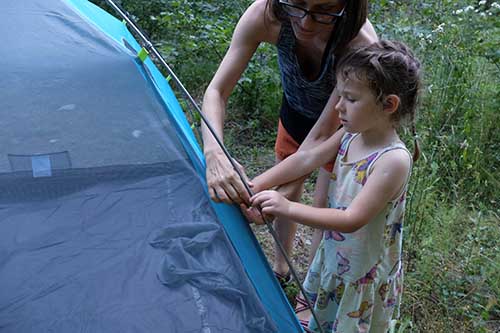

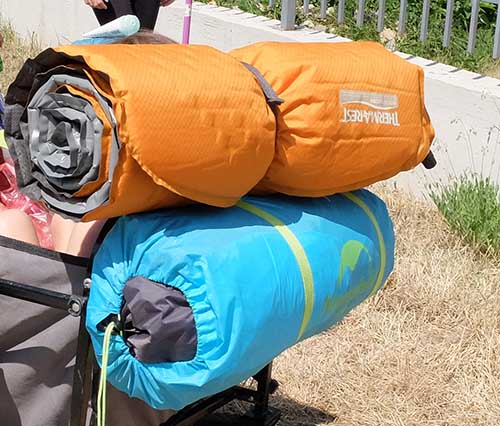

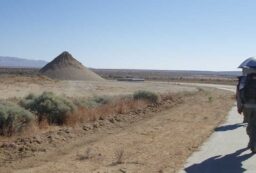
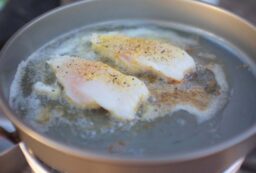







1 Comment
Dani
June 16, 2023 at 9:48 amNice review, thank you very much!